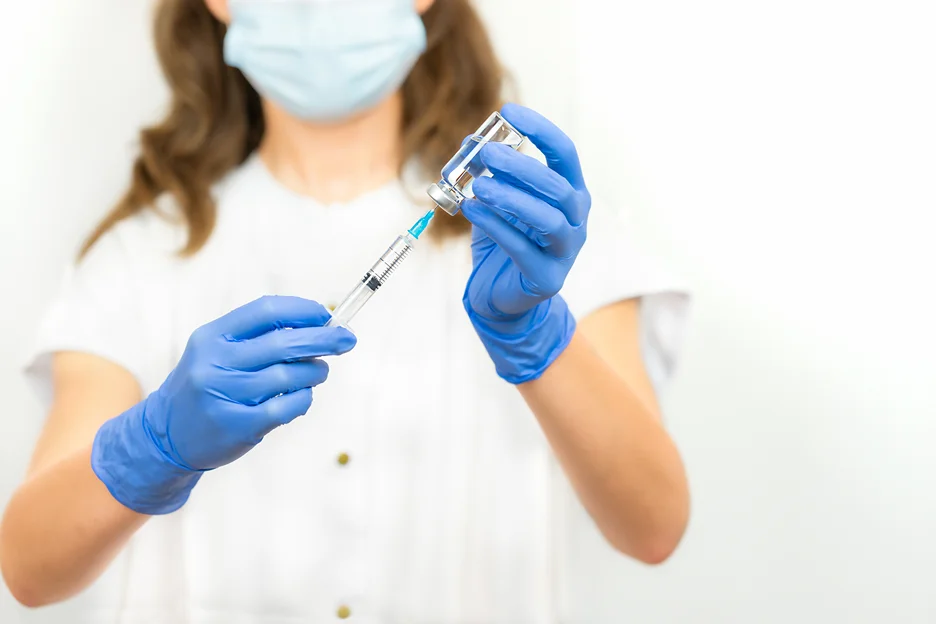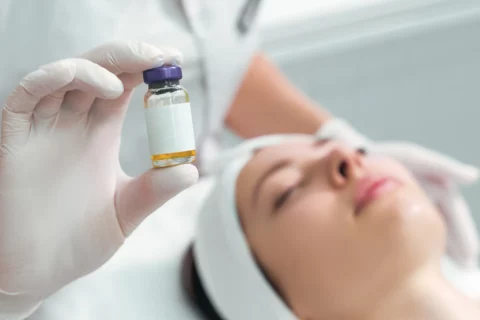Exosome therapy is rapidly emerging as a frontier in regenerative medicine and aesthetics, offering innovative treatment avenues. For practitioners considering incorporating this advanced modality, understanding the clinical protocols, business implications, and potential return on investment (ROI) is crucial. This guide provides an overview to help navigate the integration of exosome therapy into your practice.
The demand for cutting-edge, minimally invasive treatments is on the rise, and exosome therapy is capturing significant attention for its regenerative capabilities.
However, successfully integrating any new therapy requires careful planning, from understanding the science to assessing financial viability. This article aims to provide practitioners with actionable insights for incorporating exosome therapy, focusing on treatment protocols and ROI considerations.
What Are Exosomes?

Exosome Biogenesis and Structure
Exosomes are nanoscale extracellular vesicles released by cells, playing a vital role in intercellular communication. They are essentially tiny messengers, carrying a cargo of proteins, lipids, and nucleic acids (like mRNA and miRNA) from their cell of origin.
These vesicles are formed within multivesicular bodies (MVBs) inside the cell and are released into the extracellular space when MVBs fuse with the cell membrane.
Mechanisms of Action: How Exosomes Work
Once released, exosomes can travel to nearby or distant cells, where they are taken up, delivering their molecular cargo. This cargo can then modulate the function of the recipient cells, influencing processes such as inflammation, immune response, cell proliferation, and tissue regeneration.
For instance, exosomes can improve cell-to-cell communication, boost cellular vitality, promote the rate of tissue repair, and enhance immune system efficiency. Their inherent capacity for transferring genetic material, limited immunogenicity, and potential for targeted delivery make them promising therapeutic agents.
Clinical Applications of Exosome Therapy
Exosome therapy has a wide range of potential applications due to its regenerative and modulatory effects.
- Exosome Therapy for Skin Rejuvenation In aesthetics, exosomes are used for skin renewal, aiming to improve skin texture, reduce wrinkles, and enhance overall skin health.
- Exosome Therapy for Hair Restoration Exosome therapy is also being explored for hair loss, with the goal of stimulating hair follicles and promoting hair growth.
- Exosome Therapy for Joint Pain and Regeneration For conditions like arthritis or chronic inflammation, exosomes may offer a non-invasive option to reduce pain and support tissue repair in joints.
- Other Emerging Applications The versatility of exosomes means research is ongoing for many other conditions, including their use in gene therapy, personalized healthcare for early disease detection, monitoring treatment responses, and treating injuries or extended illnesses.
Exosome Therapy vs. Stem Cell Therapy

It’s common to compare exosome therapy with stem cell therapy, as both are prominent in regenerative medicine.
Key Differences in Mechanism and Application
Stem cells are undifferentiated cells that can develop into various specialized cell types and are considered building blocks for tissue repair. They can directly replace damaged cells or differentiate to form new tissue. Exosomes, on the other hand, are not cells themselves but are cell-derived vesicles that act as signaling molecules, carrying instructions to guide repair and regeneration processes.
Advantages and Disadvantages of Each Approach
Exosome therapy is often considered non-invasive and to have a low risk profile, as exosomes do not contain living cells, reducing the likelihood of immunological rejection. Stem cell therapies, particularly those involving embryonic stem cells, can face ethical and legal considerations, which are largely circumvented with exosomes derived from adult stem cells or other sources.
Exosomes may also be easier to standardize and store compared to cellular therapies. However, stem cells offer the potential for direct tissue engraftment. Often, advanced therapies may use exosomes to improve signaling and reduce inflammation, while stem cells are used for direct tissue repair.
Administration Methods
The method of exosome administration can vary depending on the condition being treated and the desired outcome.
- IV Infusion: Systemic effects can be achieved through intravenous administration of exosomes.
- Local Injections: For targeted treatment, such as in joints or specific skin areas, exosomes can be delivered via local injections.
- Topical Application: In dermatological and aesthetic applications, exosomes may be applied topically, often in conjunction with procedures like microneedling to enhance penetration.
Patient Considerations
Proper patient selection and management are key to successful exosome therapy.
Pre-Treatment Preparation
Before undergoing exosome therapy, patients should consult thoroughly with their healthcare provider. Pre-treatment guidelines may include:
- Nutritional adjustments: Incorporating anti-inflammatory foods (rich in omega-3s like fish and nuts) and antioxidant-rich fruits and vegetables. Limiting processed foods, sugar, alcohol, and excessive caffeine is also often recommended.
- Physical health: Maintaining good physical fitness can support the body’s response to therapy.
- Medication review: Avoiding certain substances or medications as advised by the practitioner.
Post-Treatment Care
After exosome therapy, adherence to post-treatment care instructions is important for optimal outcomes and recovery. This may involve:
- Following specific guidelines on activity levels and dietary recommendations.
- Proper care of any treatment sites.
- Attending scheduled follow-up appointments to monitor progress.
- Being vigilant about any potential side effects and reporting them promptly.
ROI Analysis for Exosome Therapy
Integrating exosome therapy requires a careful assessment of the potential return on investment.
Key Factors Influencing ROI
The ROI for exosome therapy will depend on several factors:
- Initial Investment: Costs for equipment, exosome products, staff training, and any necessary facility upgrades.
- Operating Costs: Ongoing expenses such as the cost of exosome products per treatment, disposables, and staff time.
- Pricing Strategy: How treatments are priced for patients.
- Patient Volume: The number of patients receiving the therapy.
- Marketing and Patient Acquisition Costs: Expenses related to attracting patients for the new service.
Calculating Potential Revenue and Profit
Patient pricing for exosome therapy can vary significantly based on geographical location, the complexity of the procedure, the source and quality of exosomes, dosage, and the condition being treated.
- Cosmetic procedures (e.g., skin rejuvenation, alopecia) may range from $3,000 to $8,000 per session.
- Treatments for injuries or chronic conditions can be more expensive, potentially $10,000 to $25,000 per session, often requiring multiple sessions.
- Some sources report average U.S. costs between $3,500 and $6,500, with a common price point around $4,900, while other averages fall in the $5,000-$10,000 range.
- The cost to produce a dose of exosomes might be relatively low ($50-$100), allowing for significant markup, though this doesn’t include other clinic overheads.
Practices need to model their specific costs and potential revenue based on their target market and service offerings.
Cost Considerations and Expense Management
Factors that determine the cost of exosome therapy for the practice include:
- Source and Quality: High-purity exosomes, such as those derived from umbilical cord mesenchymal stem cells, can be more expensive due to their perceived safety and efficacy.
- Dosage: The amount of exosomes required will depend on the treatment goals and severity of the condition.
- Type of Treatment: More complex interventions or those combined with other modalities may increase costs.
- Supplier Pricing: Costs will vary between different exosome manufacturers and distributors.
Financial Planning Tools
While specific tools are beyond the scope of this article, practices should consider developing or utilizing:
- Budgeting Templates: To track initial investments and ongoing operational costs associated with exosome therapy.
- Financial Modeling: To project potential revenue, break-even points, and profitability based on different pricing and patient volume scenarios.
Sourcing from Reputable Vendors

The quality and safety of exosome products are paramount.
Key Considerations When Evaluating Suppliers
Practitioners should diligently vet potential suppliers. Look for:
- Advanced Isolation Techniques: Modern technologies ensure precise isolation and purification of exosomes, maximizing quality and potential benefits.
- Quality Control and Sterility: Suppliers should demonstrate adherence to stringent quality control measures, including cleanroom facilities and sterile handling procedures to prevent contamination.
- Regulatory Compliance: Ensure vendors comply with relevant regulatory standards and provide appropriate documentation.
- Source Transparency: Clear information about the source of the exosomes (e.g., mesenchymal stem cells from umbilical cords, bone marrow, adipose tissue) and characterization data.
Ensuring Product Quality and Purity Pure, high-standard exosomes are critical for safety and efficacy. Good Manufacturing Practice (GMP)-compliant protocols for production are a key indicator of quality. This includes rigorous testing for identity, purity, potency, and safety (e.g., sterility, endotoxin levels).
Regulatory Landscape and Compliance
Navigating the regulatory environment is essential when offering exosome therapy.
Current Regulatory Status of Exosome Therapy Exosome therapies are generally considered experimental in many jurisdictions, including the U.S., and may not be approved by regulatory bodies like the FDA for specific disease treatments. This means they are often not covered by insurance, and patients typically pay out-of-pocket. Research is ongoing, and regulatory frameworks are still evolving.
Compliance Best Practices Practices offering exosome therapy must:
- Adhere to Applicable Regulations: Stay informed about federal and state regulations governing cell-based therapies and unapproved treatments.
- Maintain GMP Standards if applicable: If involved in any manipulation or extensive preparation, Good Manufacturing Practice (GMP) guidelines are critical. For most clinical practices, this translates to sourcing from GMP-compliant manufacturers.
- Implement Robust Quality Control: Ensure all treatments meet quality control requirements, including proper documentation.
- Informed Consent: Provide patients with comprehensive information about the experimental nature of the therapy, potential risks and benefits, alternative treatments, and costs.
- Ethical Marketing: Avoid making unproven claims about efficacy.
Conclusion

Integrating exosome therapy into a practice offers exciting possibilities for providing advanced regenerative treatments. However, it requires a thorough understanding of the science, clinical protocols, patient management, and careful financial planning to ensure both clinical success and a positive return on investment. The field is dynamic, with ongoing research likely to refine protocols, expand applications, and potentially lead to more accessible costs and clearer regulatory pathways in the future.






